Winter announces its arrival when you start facing dry skin, a stuffy nose, and cracked lips. Thankfully, the biggest savior that we have is our humidifier. Anybody who suffers from respiratory disorders can use a humidifier and protect themselves from these physiological problems during winter.
However, humidifiers do require a fair bit of maintenance. If you don’t clean your humidifier, you may end up breathing in harmful microorganisms.
Fortunately, you don’t need to spend a lot of money to buy a specialized cleaner for your humidifier. Because you can add vinegar to humidifier water to clean it.
Vinegar has been used for its cleaning properties for centuries. Let’s have a look at how vinegar can do wonders for your humidifier as well.
- Why is Cleaning Your Humidifier Important?
- Why Should You Use Vinegar to Clean Your Humidifier?
- What Are the 4 Different Types of Vinegar That You Can Add to Humidifier Water?
- How to Clean a Humidifier With Vinegar: 6 Steps
- How to Disinfect Your Humidifier: 3 Ways
- Regular Usage Tips for Humidifier
- Maintenance Tips for Humidifiers
- What Are the Different Types of Humidifiers?
- What Are the Benefits of Using a Humidifier?
- Frequently Asked Questions
- Final Thoughts
Why is Cleaning Your Humidifier Important?
Here are some reasons why we should keep our humidifiers clean at all times.
To Maintain Its Efficiency
Tap water has high mineral content. Using tap water in a humidifier can cause the accumulation of minerals inside the humidifier. These minerals deposited in the humidifier are known as limescale.
Humidifiers convert water into a micro-fine mist with the help of ultrasonic vibrations. Limescale formation hampers these vibrations, causing a humidifier’s efficiency to fall.
If limescale accumulates into a thick mass, then it will decrease how much water the humidifier can hold. This can also lead to reduced device efficiency. This is the primary reason why manufacturers recommend using only mineral-free or distilled water in a humidifier.
To Fight Infections
Dirty humidifiers can lead to infections and allergies in people who suffer from asthma or other respiratory conditions. It can also trigger lung infections or flu-like symptoms (source). Bacteria and mold love humid areas and moisture.
Read also: Common Household Mold Types
When you inhale bacteria from a humidifier, it can irritate the tiny airways in your respiratory system and create breathing issues.
If you proceed to use a humidifier without cleaning it properly, you may be risking your health because breathing these harmful microorganisms can be dangerous. Thus it is essential to clean your humidifier on occasion.
To Avoid Odor
If you do not clean the humidifier properly, mold and bacteria can accumulate on the filter. This leads to a bad odor. To keep your house from smelling like a damp dungeon, you will want to clean it properly.
Why Should You Use Vinegar to Clean Your Humidifier?
Vinegar is the best option for cleaning your humidifier as it can remove dirt and grease, dissolve mineral deposits, and kill bacteria. Thus, using vinegar to clean your humidifier is a smart option. There are two main benefits of using vinegar:
1. It Kills Microorganisms
Acetic acid is the key component in vinegar that works to clean. Acetic acid is effective in killing various household microorganisms:
- Apple cider vinegar helps clean Staphylococcus aureus and Escherichia coli bacteria (source).
- 6% vinegar is great against S. aureus bacteria. Infection of the S.aureus bacteria can result in Staphylococcal pneumonia, which spreads in the lungs through blood.
- Malt vinegar is an excellent way to get rid of the influenza virus (source).
- You can even use vinegar and lemon juice to get rid of salmonella pathogens in the water.
2. It Dissolves Limescale
The acid present in the vinegar reacts with limescale and produces soluble salts. Thus, you can apply vinegar, let it settle for a while, and then wash away the limescale deposits easily using water or any other light cleansing agent.
What Are the 4 Different Types of Vinegar That You Can Add to Humidifier Water?
As explained above, the active ingredient that is found in vinegar is acetic acid. There are three different types of vinegar: balsamic vinegar, apple cider vinegar, and white vinegar, all of which are effective against microorganisms and help clean.
Each type of vinegar has unique properties, and we will discuss them in this section.
1. Apple Cider Vinegar
Apple cider vinegar is an excellent alternative to plain white vinegar. Apple cider vinegar is excellent for its utility in cleaning humidifiers and has a pleasant aroma. You can use a 50/50 solution of apple cider vinegar and water.
You can use this formula and soak the removable components of the humidifier. Make sure that you rinse the humidifier thoroughly after soaking to remove any kind of dirt and residue present in the humidifier.

2. Balsamic Vinegar
Balsamic vinegar is composed of grape must: a boiled, fermented, and acidified form of pressed grape juice. This gives it a darker tint in comparison to apple cider vinegar. Balsamic vinegar has a 6% acidity level, which makes it an excellent cleaner.
3. Industrial Vinegar
Industrial vinegar consists of 20 to 50% acetic acid, making it suitable for culinary use as well as cleaning purposes.
It has the strongest smell and lasts for a longer period. People who suffer from respiratory ailments may want to avoid using industrial vinegar.
4. White Vinegar
White vinegar is composed of fermented grains and is cheaper than other vinegar products. White vinegar has the highest acetic acid content. This is more effective against various microorganisms and limescale and can help to get rid of grease and dirt present in the humidifier.
How to Clean a Humidifier With Vinegar: 6 Steps
You will want to clean your humidifier often because limescale deposits very quickly. You can clean your humidifier every week. Here are the steps to follow to clean your humidifier:
1. Prepare the humidifier
Turn off the humidifier before you disassemble it. Pour out any residual water present in the tank. Detach the removable part of the base to enable you to reach the deepest areas of the humidifier. Make sure you keep in mind where every part goes as you will need to reassemble it afterward.
2. Clean the filter
If your model consists of a filter, you should clean it. Hold it under tap water and rinse out all impurities. Do not use vinegar for this step, as the smell of the vinegar lingers inside the filter for an extended period. Use a toothbrush to remove any stubborn spots after cleaning the filter. Place the filter on a clean cloth and dry it while you clean the other parts of the humidifier.
3. Clean the tank
Fill the tank with some water and then add 1 to 2 tablespoons of vinegar. Close the filter and shake it so that vinegar reaches all the humidifier surfaces. Let the water be still for 30 minutes as this much time is suitable to get rid of bacteria and mold.
Scrape the remaining limescale with the help of a toothbrush. If there is too much limescale buildup in the tank, you can add two to three extra tablespoons of vinegar to help dissolve it.
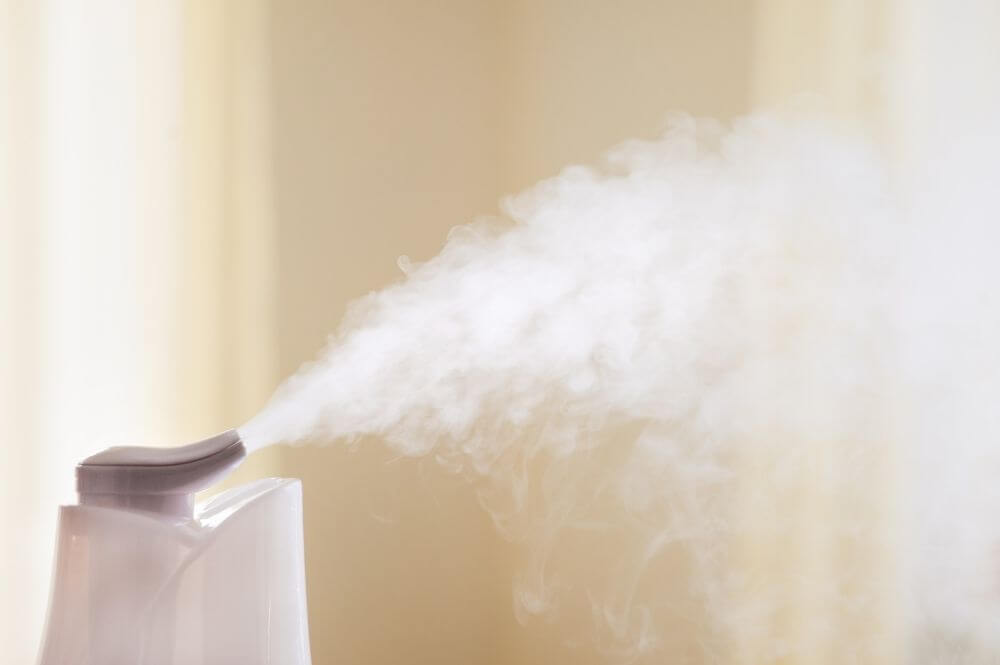
4. Clean the base
After adding 2 to 3 tablespoons of vinegar, fill the entire base with water. Let the mixture settle for at least 30 minutes. Try to clean all the detachable components. You can use a small toothbrush in areas that are tougher to reach.
5. Rinse the humidifier
Rinse out all the components of the humidifier under tap water. Shake it well to get rid of the vinegar residue left inside. The smell of the vinegar will gradually disappear after drying it.
6. Wipe it out and let it dry
Clean the humidifier parts with a clean cloth damped with the water. Try to clean all the components placed on a clean towel and let them dry for some time. Dry it with a dry cloth if you want to use the humidifier instantly. Air drying will help you get rid of any vinegar smell.
How to Disinfect Your Humidifier: 3 Ways
The regular cleaning cycle is great for disinfecting your humidifier, but it may not be enough. For a deeper clean, you can follow the steps below. You do not need to do this deeper clean often. Once a month is is enough for this particular regimen.
1. Use vinegar to clean out the humidifier
Fill your humidifier with water and add 2-3 tablespoons of vinegar. Next, you can place the humidifier outside your house and run it for an hour.
Pour out the remaining water and rinse the base and tank properly. Before using the humidifier in the house, it is better to run it with distilled water. This will make sure that remnants of vinegar will not be left inside.
2. Use hydrogen peroxide
Though vinegar effectively kills germs and bacteria, it’s not as strong as hydrogen peroxide. You can mix 3 cups of hydrogen peroxide with one gallon of water. After that, you can perform the same cleaning steps mentioned above.
Make sure you check the humidifier instructions before using any kind of heavy-duty solution. Otherwise, some humidifiers can get permanently damaged. Pay special attention to the rinsing and drying steps.
If the humidifier is turned on with hydrogen peroxide inside, it can cause some harmful respiratory problems.
3. Use bleach
Lastly, you can clean your humidifier with the help of bleach. Prepare a mixture of 1 tbsp bleach in 1 gallon of water and fill the tank. Let it settle for around 30 to 45 minutes, and then flush it well with clean water.
Do not leave the bleach inside the tank for more than an hour, as this can damage the machine. Dry properly to ensure that the remnants of bleach are not left in the humidifier. You can run the humidifier outside or in a well-ventilated area to ensure that the smell of bleach doesn’t remain.
Regular Usage Tips for Humidifier
For the best results, there are some easy tips you can follow to make the most out of your humidifier.
Rinse out the water basin before use
Before turning off the humidifier for the day, make sure to throw out the standing water left in the humidifier. This may help you eliminate certain bacteria that may have started to grow inside the humidifier. You don’t need to disinfect it daily, but it is essential to add fresh water.
Use distilled water
Distilled water is always recommended for humidifiers. As tap water consists of certain minerals, these minerals get dispersed into the air along with all the water vapor. This can lead to white dust on the surface of the room. The minerals can result in the growth of bacteria on the walls and their deposits that can be difficult to clean.
Clean and drain before storage
When you use your humidifier for the season, it is essential to give it a deep clean and dry it properly before restoring it. If there is any damp area in the appliance when you store it, you will likely notice the growth of bacteria and mold when you pull it out to use it again in the next season.
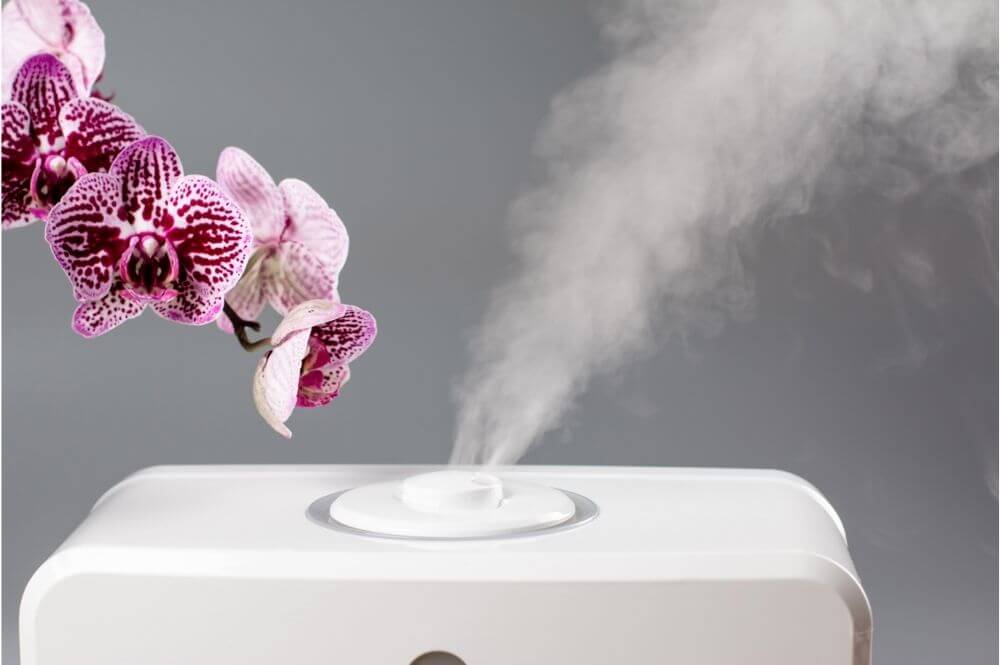
Deep clean it once a week
Manufacturers suggest deep cleaning at least once a week when using a humidifier regularly. This will ensure that you and your family are not breathing air that contains mold spores and bacteria.
Replace the filter
Depending upon how often you use your humidifier, you should make sure that you change the filter every two months. This will ensure that the moisture present in the air is pure and clean.
Keep the tank empty when you are not using the humidifier
If you are not using your device for a couple of days or a week, make sure that the water tank is dry and empty. This will reduce the chance of unwanted bacterial growth. You can throw away filters and used cartridges before storing your humidifier.
You can use essential oils
The vinegar scent will gradually dissipate on its own; however, if you want to speed up this process, you can add essential oil to the humidifier water.
Must read: Using Essential Oils in a Humidifier
Maintenance Tips for Humidifiers
There are a few other ways that you can extend the life of your humidifier apart from regular cleaning.
Shut it off once in a while
Many people love keeping their humidifiers always on and at the highest setting. They may feel that running it all the time keeps them safe from dry air. However, as we have seen above, a humidifier can quickly become inefficient if you do this.
One of the best things you can do is to turn off the humidifier when not in use (especially if you are going out, or the air is not as dry). This will keep the humidifier working more efficiently and for longer.
Don’t put it in storage without cleaning
After winter is over, it is time to pack away the old humidifier and welcome the summer. But that does not mean that you forget your old pal just yet. Go for a deep clean before putting away your trusty friend, because if you leave the device on its own, mold can start to grow quickly.
It is very important to apply the deep clean cycle that we described above before packing away your humidifier for the winter.
What Are the Different Types of Humidifiers?
There are five main types of humidifiers:
- Cool mist humidifiers
- Evaporative humidifiers
- Vaporizer humidifiers
- Ultrasonic humidifiers
- Warm mist humidifiers
Must read: The Best Humidifiers for Hard Water
What Are the Benefits of Using a Humidifier?
Parched air draws moisture from your sinuses and leads to sinus infections and nose bleeding. You can prevent your skin from getting damaged by using a humidifier. A humidifier can help to improve breathing if you are suffering from a cold or other conditions that affect your respiratory system.
Humidifiers can help you avoid the following problems:
- Dry skin
- Irritated eyes
- Sore throat
- Allergies
- Dry cough
Frequently Asked Questions
What can I add to my humidifier water?
To clean it thoroughly, you can add distilled water and white vinegar to the humidifier water. To get rid of the post-cleaning vinegar smell, you can add some drops of essential oils.
How much vinegar should I put in my humidifier?
You can add one cup of water and one cup of vinegar into the humidifier and leave it to settle for a period of time. Vinegar has various antibacterial properties and helps disinfect the humidifier.
What can I put in my humidifier water to prevent mold?
To prevent mold in your humidifier, you can add bleach, hydrogen peroxide, and white vinegar. Bleach and hydrogen peroxide is more effective than white vinegar.
Also read: Do You Put Salt in a Humidifier?
Final Thoughts
In this article, we have discussed how adding vinegar to your humidifier cleaning cycle can help to keep your humidifier in tip-top shape and maintain cleaner air in your personal space. We need to keep our humidifiers clean to continue to breathe clean air.
As a humidifier contains water, there is a high chance mold and bacteria can develop inside it. You can put vinegar into the humidifier to clean it and free it from microorganisms. More effective chemicals like bleach and hydrogen peroxide can also be used to clean a humidifier properly.
Related article: Do You Use A Humidifier In The Summer


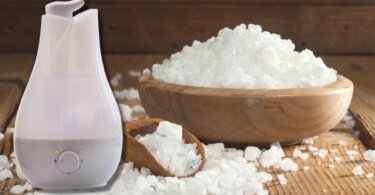
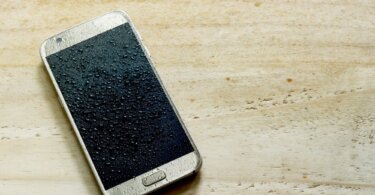
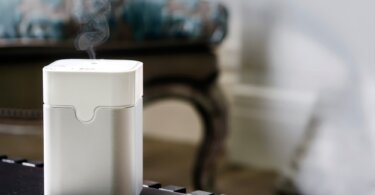
Leave a Comment